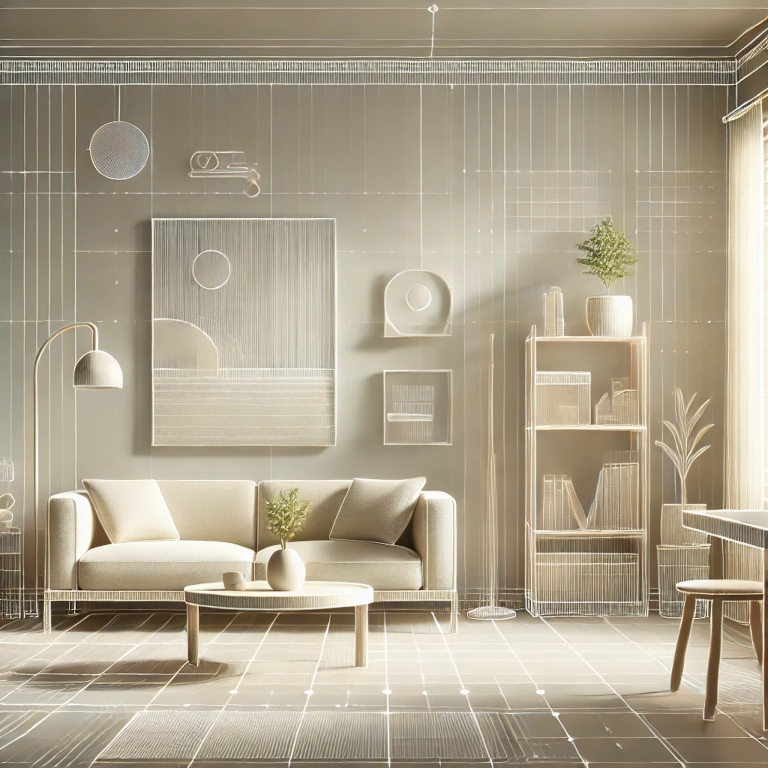Minimalist living is more than just a design trend; it is a lifestyle choice that emphasizes simplicity, functionality, and the intentional reduction of excess. This approach to home living can lead to a more peaceful, organized, and fulfilling life. As an expert in Home Living, this article will explore the principles of minimalist living, its benefits, and practical steps to create a minimalist home.
Understanding Minimalist Living
Minimalist living focuses on the idea that less is more. It involves decluttering your space, eliminating unnecessary items, and keeping only what truly adds value to your life. This lifestyle encourages mindful consumption and a deeper appreciation for the things you own.
Principles of Minimalist Living
- Intentionality: Every item in your home should have a purpose or bring joy. Avoid keeping things out of obligation or habit.
- Simplicity: Opt for clean lines, neutral colors, and unadorned spaces. Simplicity in design promotes a sense of calm and order.
- Functionality: Prioritize function over form. Choose furniture and items that serve multiple purposes and enhance your daily life.
- Mindfulness: Be mindful of what you bring into your home. Consider the environmental and emotional impact of your purchases.
Benefits of Minimalist Living
1. Reduced Stress
A cluttered environment can lead to increased stress and anxiety. By decluttering and organizing your space, you create a calm and serene atmosphere that promotes relaxation and mental clarity.
2. Increased Productivity
Minimalist living helps eliminate distractions, allowing you to focus better on tasks. A clean and organized space can boost productivity and efficiency.
3. Financial Freedom
By embracing minimalist living, you become more conscious of your spending habits. This can lead to significant savings and financial freedom, as you purchase only what you need and truly value.
4. Environmental Impact
Minimalism encourages sustainable living. By reducing consumption and waste, you contribute to a healthier planet. Choose quality over quantity, and support eco-friendly brands and products.
Steps to Create a Minimalist Home
1. Declutter Your Space
Start by decluttering each room in your home. Sort items into categories: keep, donate, recycle, and discard. Be honest with yourself about what you truly need and what is just taking up space.
- Clothing: Keep only items that you wear regularly and love. Donate or sell clothes that no longer fit or suit your style.
- Kitchen: Streamline your kitchen by keeping essential appliances and utensils. Get rid of duplicates and items you rarely use.
- Living Areas: Remove unnecessary decor and furniture. Opt for multifunctional pieces that serve various purposes.
2. Organize and Simplify
Once you have decluttered, organize your remaining items. Use storage solutions that keep things tidy and accessible. Label containers and drawers to maintain order.
- Storage Solutions: Invest in storage bins, shelves, and organizers that suit your space and style.
- Simplify Decor: Choose a few statement pieces that bring joy and harmony to your space. Avoid overcrowding surfaces with knick-knacks.
3. Adopt a Minimalist Aesthetic
Embrace a minimalist aesthetic by focusing on simplicity and functionality in your decor and furnishings. Choose a neutral color palette, natural materials, and clean lines.
- Neutral Colors: Use whites, grays, and earthy tones to create a calming and cohesive look.
- Natural Materials: Incorporate materials like wood, stone, and linen to add warmth and texture.
- Clean Lines: Select furniture with simple, clean lines that offer both form and function.
4. Mindful Consumption
Be mindful of what you bring into your home. Before making a purchase, ask yourself if it serves a purpose or adds value to your life. Avoid impulse buys and focus on quality over quantity.
- Quality Over Quantity: Invest in high-quality items that will last longer and serve you better.
- Sustainable Choices: Choose eco-friendly and ethically made products whenever possible.
5. Maintain Your Minimalist Lifestyle
Minimalism is an ongoing process. Regularly assess your belongings and make adjustments as needed. Stay committed to the principles of minimalist living to maintain a peaceful and organized home.
- Regular Check-Ins: Periodically review your possessions and declutter as needed.
- Mindful Habits: Develop habits that support minimalism, such as tidying up daily and being intentional with new purchases.
Summary
Minimalist living offers numerous benefits, from reduced stress and increased productivity to financial freedom and a positive environmental impact. By decluttering, organizing, and adopting a mindful approach to consumption, you can create a serene and functional home that supports your well-being. Embrace the principles of minimalism to enjoy a simpler, more intentional way of living.






